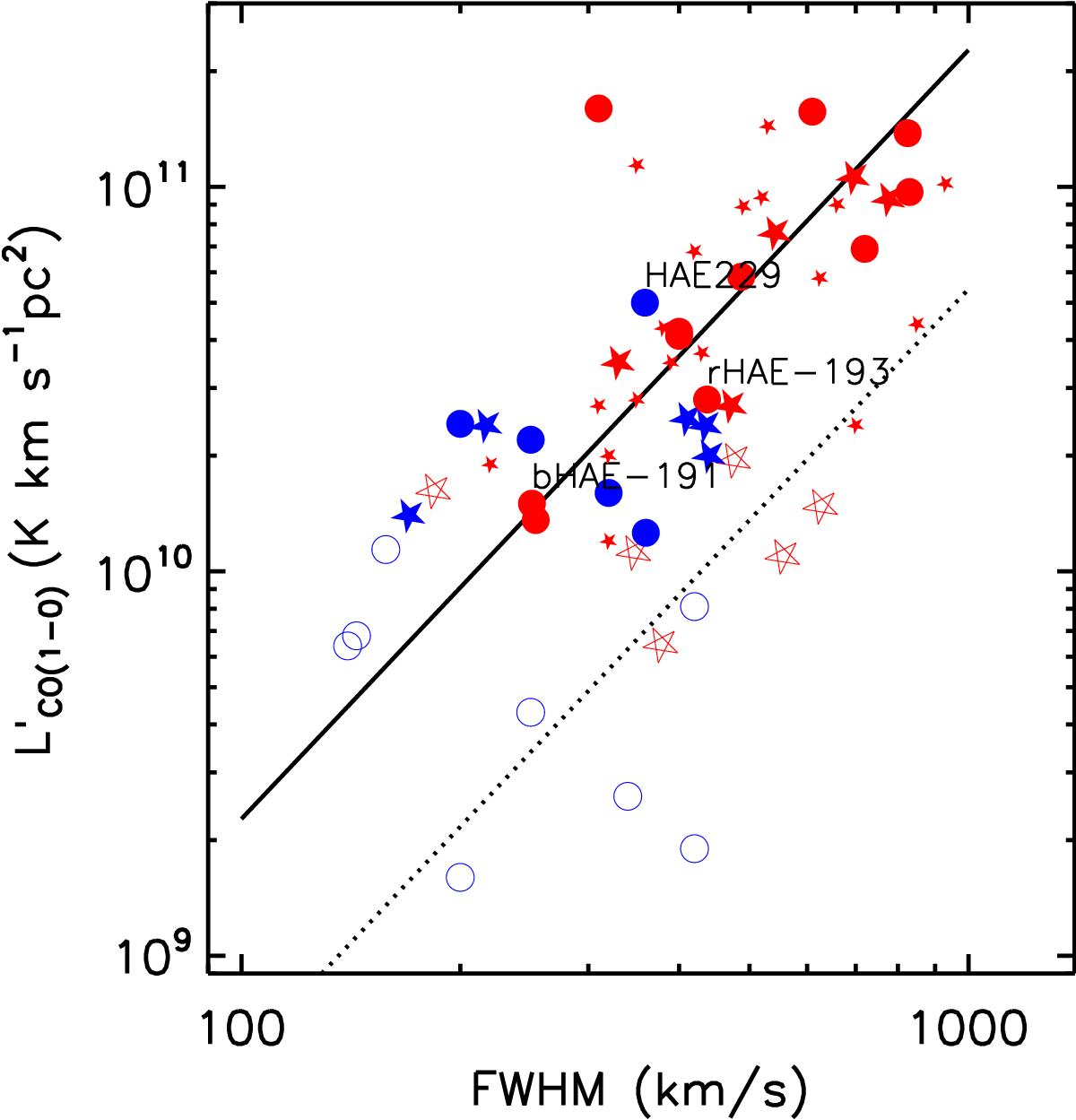Fig. 7

Relation between FWHM of the CO(1−0) line and ![]() for cluster (circles) and field galaxies (stars). High-redshift sources, those with z > 1, are indicated by filled symbols while sources with z < 1 are indicated by hollow ones. The color-coding used in the figure is as follows: intermediate-z ULIRGs (red hollow stars Magdis et al. 2014), normal SFGs at z = 1.5 (blue filled stars Daddi et al. 2010a; Aravena et al. 2014), and SMGs (large and small red filled stars from Ivison et al. 2011; Bothwell et al. 2013, respectively). References for cluster sources can be found in Sect. 5.2 and Table A.1. The mode of star formation for each source is color-coded as blue for “disk-like” and red for “starburst”. The solid line shows the relation from Bothwell et al. (2013). The dashed line assumes the typical radius for disk galaxies. Both high-z population, dusty starbursts, and disk-like galaxies show a unique correlation between CO luminosity and line width with significant scatter (~0.3 dex).
for cluster (circles) and field galaxies (stars). High-redshift sources, those with z > 1, are indicated by filled symbols while sources with z < 1 are indicated by hollow ones. The color-coding used in the figure is as follows: intermediate-z ULIRGs (red hollow stars Magdis et al. 2014), normal SFGs at z = 1.5 (blue filled stars Daddi et al. 2010a; Aravena et al. 2014), and SMGs (large and small red filled stars from Ivison et al. 2011; Bothwell et al. 2013, respectively). References for cluster sources can be found in Sect. 5.2 and Table A.1. The mode of star formation for each source is color-coded as blue for “disk-like” and red for “starburst”. The solid line shows the relation from Bothwell et al. (2013). The dashed line assumes the typical radius for disk galaxies. Both high-z population, dusty starbursts, and disk-like galaxies show a unique correlation between CO luminosity and line width with significant scatter (~0.3 dex).
Current usage metrics show cumulative count of Article Views (full-text article views including HTML views, PDF and ePub downloads, according to the available data) and Abstracts Views on Vision4Press platform.
Data correspond to usage on the plateform after 2015. The current usage metrics is available 48-96 hours after online publication and is updated daily on week days.
Initial download of the metrics may take a while.


